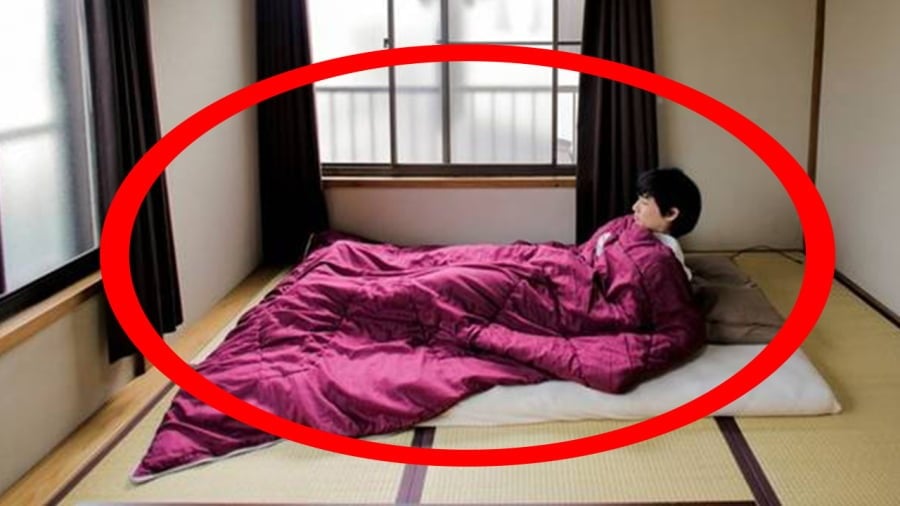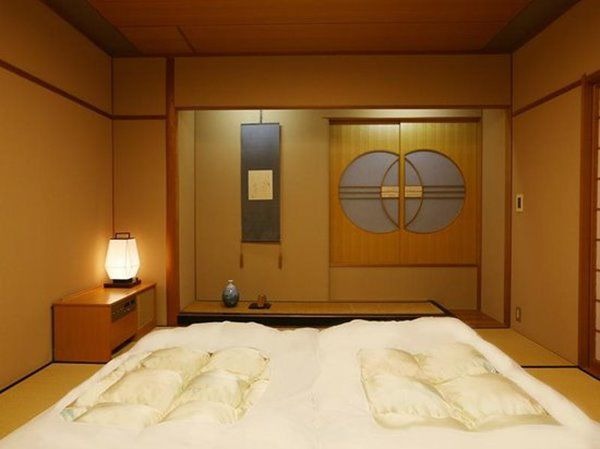Why Do Japanese People Prefer Sleeping on the Floor?
While many people enjoy a comfortable sleep on a soft bed, the Japanese have a unique preference for sleeping on the floor. Even with spacious and well-equipped homes, they often choose to sleep on the ground. But why?
Maximizing Living Space
In Japan, tatami mats are an integral part of every household. Tatami mats are not just for flooring but serve multiple purposes. They can be used for hosting guests or transformed into a sleeping area when needed.
With a high population density and typically small living spaces, using tatami mats helps save space and simplifies living areas. Additionally, many Japanese homes are equipped with underfloor heating systems, keeping the rooms cozy even during winter.

Tatami mats are a staple in Japanese households.
Ensuring Children’s Safety
The Japanese also believe that sleeping on the floor is safer for young children. With a bed, there is a risk of the child rolling off and falling. Floor sleeping provides more freedom for children to roll and crawl without the worry of falling or encountering similar accidents.
Fear of Natural Disasters
Japan is a country frequently faced with earthquakes, and its citizens are always prepared for emergencies. To react swiftly in the event of an earthquake, sleeping on the floor allows them to sense the vibrations more clearly and quickly move to a safer place.
On the other hand, sleeping on a bed may reduce the perception of shaking, slowing down reaction time and increasing the risk of getting trapped in an emergency. Additionally, having minimal furniture makes it easier to escape dangerous situations.
Health Benefits
Many Japanese believe that sleeping on a very soft surface may not be good for bone health. They argue that a bed with moderate elasticity, neither too hard nor too soft, will improve back health and blood circulation.
Sleeping on a hard surface, like the floor, helps distribute body weight more evenly and reduces pressure on various body parts, which can prevent back pain. Conversely, soft beds may sag over time, leading to spinal curvature and back pain. Floor sleeping also reduces the risk of falls for the elderly when getting off the “bed.”

Japanese people believe that sleeping on a very soft surface may not be ideal for bone health.
The Japanese don’t just sleep on wooden floors; they also use tatami mats or thin mattresses. Tatami mats are made from tightly packed dry straw, providing a bouncy yet comfortable surface. Japanese pillows are typically smaller, and mattresses are thinner, often filled with grains. While the pillow may feel firmer than fluffy alternatives, it is better for the neck and nape.
Easier Awakening
Another reason the Japanese prefer floor sleeping is that it makes waking up easier. Sleeping on the floor improves sleep quality and reduces dependence on pillows and blankets. This can lead to a more pleasant awakening and fewer instances of body aches due to incorrect sleeping postures.
Cultural Tradition
Lastly, an important reason for this preference is that floor sleeping has been a part of Japanese culture for thousands of years. This tradition has been passed down from generation to generation, reflecting the blend of cultural customs and Japanese lifestyles.
Releasing Carp into the Bridge Waters, Along with Plastic Bags: A Major Mistake During the Tribute to the Kitchen God Festival
The practice of releasing carp on the day of sending off the Kitchen God is a beautiful tradition of the Vietnamese people. However, in modern times, a significant portion of the population has misinterpreted this practice, tarnishing the essence of this cultural ritual and reflecting poorly on Vietnam’s cultural heritage.



































